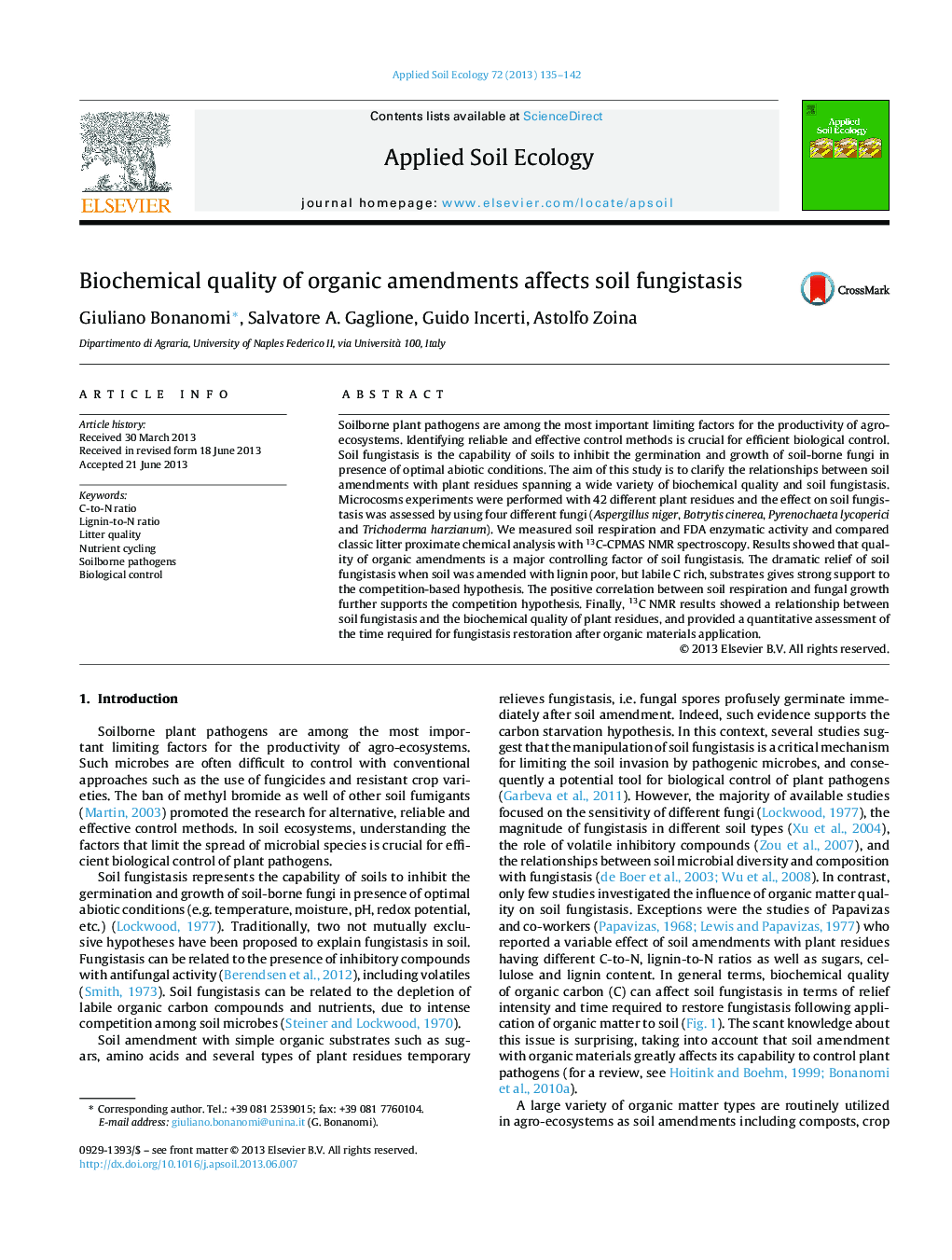| کد مقاله | کد نشریه | سال انتشار | مقاله انگلیسی | نسخه تمام متن |
|---|---|---|---|---|
| 4382331 | 1617811 | 2013 | 8 صفحه PDF | دانلود رایگان |

• We test litter biochemical quality as a controlling factor for soil fungistasis.
• A new bioassay evaluates fungistasis in soil amended with 42 litter types.
• After amendment fungistasis is relieved with lignin-poor, but labile C-rich materials.
• Intensity and duration of the relief correlate with litter 13C NMR spectral data.
• Observations support the competition based hypothesis of soil fungistasis.
Soilborne plant pathogens are among the most important limiting factors for the productivity of agro-ecosystems. Identifying reliable and effective control methods is crucial for efficient biological control. Soil fungistasis is the capability of soils to inhibit the germination and growth of soil-borne fungi in presence of optimal abiotic conditions. The aim of this study is to clarify the relationships between soil amendments with plant residues spanning a wide variety of biochemical quality and soil fungistasis. Microcosms experiments were performed with 42 different plant residues and the effect on soil fungistasis was assessed by using four different fungi (Aspergillus niger, Botrytis cinerea, Pyrenochaeta lycoperici and Trichoderma harzianum). We measured soil respiration and FDA enzymatic activity and compared classic litter proximate chemical analysis with 13C-CPMAS NMR spectroscopy. Results showed that quality of organic amendments is a major controlling factor of soil fungistasis. The dramatic relief of soil fungistasis when soil was amended with lignin poor, but labile C rich, substrates gives strong support to the competition-based hypothesis. The positive correlation between soil respiration and fungal growth further supports the competition hypothesis. Finally, 13C NMR results showed a relationship between soil fungistasis and the biochemical quality of plant residues, and provided a quantitative assessment of the time required for fungistasis restoration after organic materials application.
Schematic illustration of fungistasis dynamic following soil amendment (above) and profiles of correlation between the 13C-CPMAS NMR spectral signals of 42 organic amendments and the response of four target fungal species grown on the same materials (below). For all fungal species, growth was positively correlated with litter relative content of O-alkyl C and negatively with methoxyl C types (below).Figure optionsDownload as PowerPoint slide
Journal: Applied Soil Ecology - Volume 72, October 2013, Pages 135–142